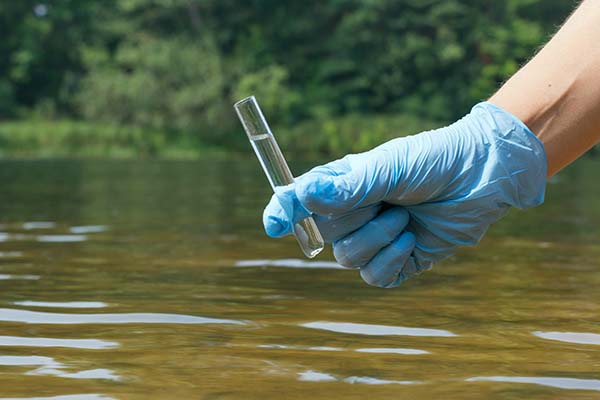You Need a Phase II ESA, Now What?
So, you’ve completed a Phase I Environmental Site Assessment(ESA), and unexpectedly, there is a potential for a contamination discovered at the property. Now, you are told a Phase II ESA is needed. What’s next?
In a Phase II ESA, Interested parties find whether or not contamination exists by having assessment performed, an approximation of the vertical and horizontal extent of contamination, and potential remediation solutions, if necessary.
For many buyers, taking ownership of a property that may have soil/soil gas/groundwater contamination might sound scary, and buyers, banks, developers and other associated parties may be hesitant to move forward with a property, concerned about the time, cost, and headaches associated with potential remediation.
But buyers don’t immediately need to be scared off. In many cases, the Phase II does not reveal any significant contamination and no further investigation is needed. Sometimes, if contamination is present, it may not be a risk to human health and the environment and can just be left in place.
But in instances where it is a risk, CTL has the experience and knowledge to evaluate risk and provide solutions to strategically minimize or design appropriate remediation that maintain purchasing the property for development a good deal.
PHASE I ESA VS PHASE II ESA
Phase I ESA
The Phase I ESA focuses on assessing the potential for contamination based on the historical and current use of the site and surrounding properties. It involves a meticulous review of records, a site visit, and interviews to determine if there is a potential for contamination from hazardous substances or petroleum products from its own or a nearby property’s current or past uses; which establishes what is called a Recognized Environmental Condition (REC). It is a critical step of protection from liability to have a Phase I ESA performed.
Limited Phase II ESA
When RECs are identified during Phase I ESA, the property enters the subsequent evaluative stage – the Phase II ESA!
In a Limited Phase II ESA, the main objective is to determine the absence or presence of contamination, and if found, what the general extent is. Through comprehensive sampling and analytical testing, assessors aim to validate the presence of hazardous substances or petroleum products in the soil, groundwater, and/or soil gas / sub-slab vapor.
Contaminant concentrations are compared to pre-defined state and or federal regulatory standards that are risk-based to protect human health and the environment to determine if the detected levels are acceptable. Understanding the magnitude and extent of contamination is pivotal for evaluating these risks and developing a remedial strategy, if necessary.
Delineation Phase 2 ESA
In some cases, if contamination is found in the Limited Phase II ESA, assessors may recommend a second investigation to collect additional samples in an effort to determine how far the contamination has spread, vertically and/or horizontally, and to identify where the source(s) are located, whether on-site or off-site. It serves as cost benefit assessment to best Inform decisions.
Remediation or Reevaluation
If the contaminant levels are below regulatory standards, a buyer is generally able to proceed with no further investigation. On some occasions, periodic monitoring may be recommended to ensure the contaminants are decreasing over time. In other circumstances contamination can be left In place by applying simple property restrictions that still allow development uses.
Of course, in other cases, remediation may be necessary. Depending on the analytical results, remediation can range from installation of vapor mitigation systems (VMS), which prevent contaminated soil gases from entering into a building, to “dig and haul”, which includes excavation and proper disposal of contaminated soils, or other means such as chemical Injections, or Installing systems such as soil vapor extraction (SVE), air sparging, or “pump and treat,” remediation processes used for removing and treating contaminated soil and groundwater.
While remediation can scare many buyers away, it can also be used as a negotiation tactic for purchasers and, in many cases, can be conducted on a scale that still makes development profitable, and conducted on a timeline that allows development to be move ahead even while remediation continues. The comprehensive Phase II ESA arms buyers with the information they need to reevaluate their purchase choice intelligently and confidently make the right decision to either walk away or to move forward with a plan.
WHY CTL ENGINEERING IS THE BEST CHOICE FOR YOUR PHASE II ESA
- Experience and Trust: Phase I and II ESAs can be a huge liability for property owners in the wrong hands. CTL has been in the business since 1927. Their longevity is a testament to their expertise and trustworthiness.
- CTL’s environmental staff have well over 100 years of combined experience conducting Phase II ESAs. You can rest assured knowing that they’ll do what’s best for you and your property.
- Regional Presence: CTL boasts a strong regional presence, making them familiar with local standards, regulations, and environmental challenges.
- Qualified and Certified: CTL has environmental professionals with the credentials you need, including licensed geologists, radon specialists, environmental scientists, professional engineers, and certified professionals (CP) who are able to close site’s environmental problems In Ohio for Voluntary Action Program (VAP) sites.
- One-Stop Shop: With CTL, you won’t need to deal with the hassle of hiring multiple consultants to take your project from start to finish.
Our environmental department also conducts UST closures, asbestos and lead-based paint surveys, indoor air quality surveys, wetland delineation/mitigation/permitting, and NEPA work.
Additionally, CTL provides geotechnical services, construction testing, soil/concrete testing, roofing design and observation, mining subsidence/reclamation, and accident/failure investigations.
A Phase II ESA is an integral part of environmental assessments, ensuring liability protection and the safety and viability of the owners, employees and/or patrons of any property. When it comes to picking a reliable partner for the job, CTL Engineering stands out, combining experience, expertise, and state-of-the-art facilities to deliver unparalleled service.

